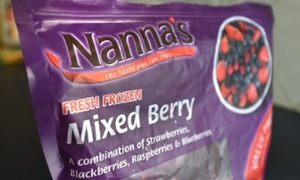
Manufacturer Patties Foods has found no evidence of the hepatitis A virus or E coli in samples of frozen berries it tested.
Thirty-four people around the country have contracted the disease since the outbreak in January. All reported eating berries manufactured by Patties Foods before falling ill. But the manufacturer insists its own testing shows no trace of the virus.
“Extensive microbiological and viral testing conducted by Patties Foods shows no evidence of systemic failure of Patties Foods’ quality assurance programs,” chief executive Stephen Chaur said. “Regardless, Patties Foods has significantly increased protection measures to ensure that any risk is further minimised in future.”
All imports of frozen berries manufactured by Patties Foods are now being tested for the virus. Nanna’s 1kg mixed berries remain off the shelves, but other berry varieties are slowly being reintroduced to the market.
“Now the testing has been completed with no systemic quality failure, the company is working with its major supermarket partners to actively re-engage consumer confidence in the frozen berry category,” Chaur said.
Patties Foods is one of around 30 companies that import frozen berries into Australia.
The Victorian Department of Health is conducting its own investigation into the hepatitis A outbreak, in conjunction with the federal Department of Agriculture and Food Standards Australia and New Zealand.
A spokesman for the Victorian Department of Health told Guardian Australia there is “strong epidemiological evidence” to prove the outbreak came from the Nanna’s product.
He said the berries are the common factor in the outbreak and that “the evidence is strong enough to conclude that Nanna’s is the source”.
In 22 cases, the sufferers of the virus had exactly the same strain of hepatitis A, suggesting a common source.
